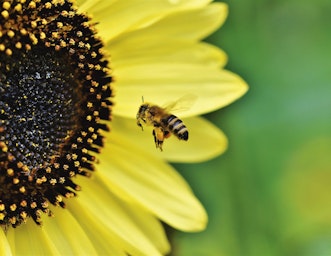
Saving Water in the Garden
As we start to feel the effects of climate change, droughts are expected to become more common in the UK. Hosepipe bans are therefore likely in many areas, to reduce stress on drinking water supplies. Techniques for saving water in the garden will reduce mains water use whilst still protecting your plants in dry weather.
Originally written by Julie Crockford for CAT’s membership magazine Clean Slate.
Saving Water in the Garden
On average, the amount of water we use in our gardens is a relatively small proportion of total water consumption. However, it tends to be at the hottest, driest times of year, when water supplies are at their lowest ebb. On a summer evening, a high proportion of the mains water use is going into gardens via hosepipes & sprinklers.
Using drinking-quality mains water on plants and lawns is rather a waste of the effort taken to clean it. This is especially so at those times when that supply is particularly stretched. There are a number of actions that help reduce the amount of mains water used in your garden:
- Keep water in the soil.
- Use rainwater and waste water.
- Have plants that are drought resistant.
Keeping water in the soil
As well as drought, climate change is expected to cause sudden, short periods of high rainfall. The danger of this is that if the soil is parched the rains is more likely to damage than replenish. Soil that contains a high proportion of organic matter will retain moisture better. Feed your soil by making your own compost, supplementing with organic fertiliser as required.
Mulching reduces the rate of evaporation from the surface, encourages good root growth and helps stop weeds using up water. You can mulch with bark or gravel (at least 5cm thick), or reused hessian-backed carpet or cardboard, or plastic sheets.
Heavy soils that can hold more water can be watered more heavily and infrequently. However, remember that if water penetrates more than 60cm into any type of soil it will be wasted. If the soil at a spade’s depth is moist then there is no need to water. Clay soils will tend to feel wetter than they are and sandy soils will feel dryer.

Using rainwater and grey water
The simplest method is to use a water butt connected to the down-pipe that comes off your roof. A cheap diverter system will channel rainwater from your roof and prevent overflowing, while a cover stops anything falling in.
The waste water from sinks, baths and washing machines is ‘grey water’. Some of this can be put into the garden with no problems. However, it is not possible to store this water without chemical treatment, so direct irrigation is the best option. Also, because it’s often warm and can contain a variety of substances, more care is needed than with rainwater. For example, washing up water may be unsuitable, due to a high concentration of grease or detergent.
See our Reusing Rainwater and Greywater page for more on making effective use of these resources.
Watering tips
If you water too sparingly, you can encourage shallow rooting and lose water to evaporation. To get water where it’s needed, use a watering can and focus it at the base of plant stems. Hoses are extremely water intensive and may even damage soil structure. If you need an automatic system try a drip or trickle supply, to distribute fine droplets and therefore waste less. Don’t use rain or grey water in a sprinkler, as breathing in the airborne droplets can pose a health risk.
To make things easier, place thirstier plants close to the water butt. Prioritise young plants and seedlings that would quickly die if neglected. Water in the morning or evening to give the plants a chance to soak up the moisture in cooler conditions. Edible leaves need to be kept watered, but established trees and shrubs should be practically drought-proof.
Hanging baskets tend to be a nightmare to keep moist. Larger containers are better than smaller ones – and choose ones with a built-in reservoir. Don’t allow them to completely dry out, because hardened compost makes it difficult for water to infiltrate.
Lawns are greedy, but if left under-watered will usually be forgiving when the rain returns. Spiking your lawn will reduce run-off by mitigating compaction of the soil and improving drainage. Longer grass is less likely to scorch, and also reduces water loss from the ground. This give you an excellent excuse for not mowing the lawn so often!
Choosing plants
In naturally dry soil try planting Mediterranean plants such as lavenders, cistus and oleander, or oriental grasses and succulents. Perennials that will cope with dry conditions include artemisia, brachyglottis, dianthus, echinacea, purpurea, iris and papaver orientale. Pelargoniums and petunias are also pretty drought-resistant.
On the vegetable patch, French beans, beetroot, chard, carrots, parsnips and cabbages are more resistant to drought. If you choose sweetcorn and pumpkin you can get away with not watering them at all. You may wish to avoid leafy vegetables that need more water, like lettuces, peas, cauliflowers and broad or runner beans.
Good root growth means that plants can more fully explore the soil to find the water available. Roots stop growing during flowering, so plant them before this. Planting in autumn or spring means that the soil isn’t being disturbed during the dry season.
To avoid any worry about watering, leave an area of rough grass as a wildlife haven. Or if you have the space, you could even develop a wild flower meadow.

Further information
CAT also offers group visits and workshops, and we sell many nature and growing books in our online shop.
Related events


All about bees – a family day out
24th August 2024
Beekeeping Taster Day
25th August 2024
Wild Wellbeing – Rustic bench making
9th September 2024Study at CAT: Our Postgraduate Courses


Did you know we are a Charity?
If you have found our Free Information Service useful, why not read more about ways you can support CAT, or make a donation.
Email Sign Up
Keep up to date with all the latest activities, events and online resources by signing up to our emails and following us on social media. And if you'd like to get involved and support our work, we'd love to welcome you as a CAT member.
